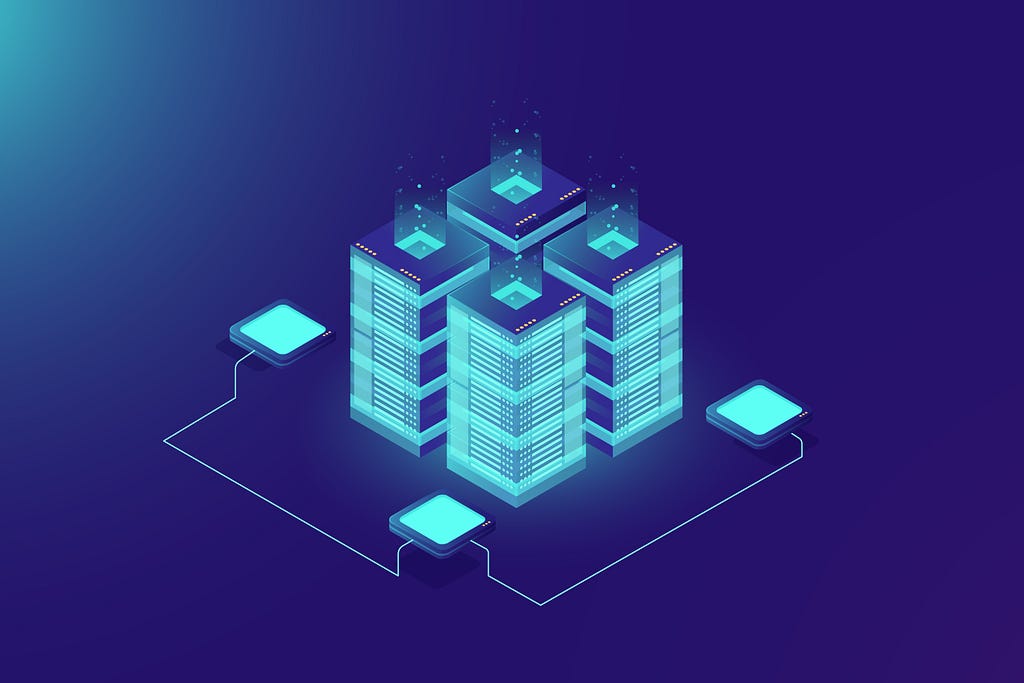
In today’s rapidly evolving digital economy, businesses are constantly seeking innovative ways to improve transparency, security, and efficiency. Blockchain technology has emerged as a powerful tool for enterprises, offering a decentralized approach to data management and transaction processing. For organizations looking to adopt blockchain, partnering with a reputable blockchain development company can make the difference between a successful implementation and a costly misstep.
Blockchain is not just about cryptocurrencies; it is a foundational technology that can be applied across industries-from supply chain and healthcare to finance and real estate. This blog will guide you through the entire journey of enterprise blockchain solutions, from initial concept and planning to the final launch of a crypto wallet or digital asset platform.
Why Enterprise Blockchain?
Blockchain technology provides a shared, immutable ledger that records transactions in a way that is secure, transparent, and tamper-proof. For enterprises, this means reduced fraud, improved traceability, and streamlined processes that can cut costs and increase trust among stakeholders.
Unlike public blockchains like Bitcoin or Ethereum, enterprise blockchain solutions are often built on permissioned networks, giving organizations control over who can participate and what data is shared. This makes them particularly suitable for industries that require privacy, compliance, and scalability.
Understanding the Blockchain Development Lifecycle
The process of developing and launching an enterprise blockchain solution involves several key stages. Each stage is critical to the success of the project and requires careful planning, technical expertise, and collaboration with stakeholders.
1. Identifying Business Needs and Objectives
Before diving into blockchain development, it’s essential to clearly define the business problem or opportunity you want to address. Common use cases include:
- Supply Chain Transparency: Tracking goods from origin to consumer.
- Secure Transactions: Reducing fraud in financial transactions.
- Decentralized Data Management: Improving data integrity and accessibility.
A thorough assessment of your current infrastructure, regulatory requirements, and stakeholder expectations is crucial at this stage.
2. Defining Network Participants
Identify the key stakeholders who will be part of the blockchain network. This might include suppliers, manufacturers, distributors, retailers, and customers. Clearly defining roles and access levels ensures that the network is secure and functional.
3. Choosing the Right Blockchain Platform
Selecting the appropriate blockchain platform is a critical decision. Popular options for enterprise solutions include:

4. Developing a Proof of Concept (PoC)
A PoC is a small-scale project that demonstrates the feasibility of your blockchain solution. It allows you to test the technology, identify potential challenges, and gather feedback from stakeholders before committing to a full-scale implementation.
Key steps in developing a PoC include:
- Defining the network structure: Decide on the number of organizations, nodes, and access rules.
- Selecting a consensus mechanism: Options include Proof of Work, Proof of Stake, and Proof of Authority.
- Developing smart contracts: Automate business processes and enforce rules within the network.
5. Integrating with Existing Systems
For most enterprises, blockchain solutions must work alongside existing IT infrastructure such as ERP, CRM, and accounting systems. APIs and middleware are essential for enabling data exchange and communication between blockchain and traditional systems.
Integration planning should address:
- Data migration: Transitioning data from legacy systems to the blockchain environment.
- Interoperability: Ensuring the blockchain can interact with other blockchains and traditional systems.
- Change management: Training employees and managing organizational change to facilitate adoption.
6. Testing and Deployment
Thorough testing is essential to identify and resolve any issues before launching the solution in a production environment. Testing should cover:
- Functional testing: Ensuring all features work as intended.
- Security testing: Identifying and mitigating vulnerabilities.
- Performance testing: Assessing scalability and transaction speed.
Once testing is complete, the solution can be deployed on-premises or in the cloud, depending on your organization’s requirements.
7. Establishing Governance and Compliance
Implementing governance processes and policies is critical for managing the blockchain network. This includes defining roles, responsibilities, and decision-making procedures, as well as ensuring compliance with relevant regulations and industry standards.
Regular audits and assessments help maintain compliance and security over time.
8. User Adoption and Training
Successful blockchain adoption depends on user acceptance. Provide training and user-friendly interfaces to help network participants understand and interact with the blockchain solution.
9. Continuous Monitoring and Improvement
After launch, continuously monitor the performance and security of the blockchain network. Gather feedback from participants and make necessary adjustments to improve the solution.
The Role of Crypto Wallets in Enterprise Blockchain
A crypto wallet is a digital tool that enables users to store, send, and receive cryptocurrencies and digital assets. In the context of enterprise blockchain solutions, crypto wallets play a crucial role in managing tokens, facilitating payments, and ensuring secure access to digital assets.
There are several types of crypto wallets, including:
- Hot wallets: Connected to the internet, suitable for frequent transactions.
- Cold wallets: Offline storage, ideal for long-term security.
- Custodial wallets: Managed by a third party, often used by enterprises for added security and compliance.
When integrating a crypto wallet into your enterprise blockchain solution, consider factors such as security, user experience, and regulatory compliance. Partnering with an experienced blockchain development company can help you choose and implement the right wallet solution for your needs.
Use Cases and Industry Applications
Blockchain technology is being adopted across a wide range of industries. Here are some notable examples:
Supply Chain Management
Blockchain enables end-to-end visibility and traceability of goods, reducing fraud and improving efficiency. Companies can track products from raw materials to the end consumer, ensuring authenticity and compliance.
Financial Services
Blockchain streamlines cross-border payments, reduces settlement times, and lowers transaction costs. It also enables the issuance and management of digital assets, such as security tokens and stablecoins.
Healthcare
Blockchain improves the security and interoperability of health records, enabling secure sharing of patient data across providers while maintaining privacy and compliance with regulations like HIPAA.
Real Estate
Blockchain simplifies property transactions by reducing paperwork, automating contracts, and providing a transparent record of ownership and transfers.
Technical Deep Dive: Building with Hyperledger Fabric
Hyperledger Fabric is a popular choice for enterprise blockchain solutions due to its modular architecture, scalability, and privacy features. Here’s an overview of the development process:
1. Planning the Network Structure
- Define the number of organizations and nodes.
- Set access rules for each organization.
- Decide on the roles of participants (e.g., endorsers, orderers, peers).
2. Setting Up the Development Environment
- Install Docker for containerization.
- Set up Fabric CA for identity management.
- Use Fabric SDKs for application development.
3. Creating and Configuring the Network
- Generate the genesis block.
- Set up orderer nodes to confirm and order transactions.
- Launch peer nodes for data storage and chaincode execution.
- Create channels for private communication between members.
4. Developing Smart Contracts (Chaincode)
- Write chaincode in supported languages (Go, Node.js, Java).
- Define business logic and data models.
- Test and deploy chaincode to the network.
5. Integrating with External Systems
- Develop APIs for data exchange.
- Connect to ERP, CRM, and other enterprise systems.
6. Deploying and Managing the Network
- Deploy the network on-premises or in the cloud.
- Monitor performance and security.
- Update chaincode and configurations as needed.
For a detailed step-by-step guide, refer to resources from Hyperledger Fabric and consult with a blockchain development company.
Cost, Timeline, and ROI Considerations
Implementing enterprise blockchain solutions involves several cost factors, including:
- Initial setup costs: Development, infrastructure, and licensing.
- Ongoing maintenance: Support, updates, and security monitoring.
- Training and change management: User adoption and organizational change.
A typical blockchain project can take anywhere from a few months to over a year, depending on complexity and scale. ROI depends on the specific use case, efficiency gains, and cost savings achieved through automation and transparency.
Future Trends in Enterprise Blockchain
As blockchain technology matures, several trends are shaping its adoption in the enterprise:
- Interoperability: Solutions that enable communication between different blockchains and traditional systems.
- Tokenization: The creation and management of digital assets, including security tokens and NFTs.
- Regulatory clarity: Increasing clarity and standardization in blockchain regulations worldwide.
- AI and blockchain integration: Combining AI with blockchain for advanced analytics and automation.
Staying ahead of these trends requires ongoing innovation and collaboration with experienced blockchain development partners.
Conclusion and Next Steps
Enterprise blockchain solutions offer significant benefits for organizations seeking to improve transparency, security, and efficiency. The journey from concept to crypto launch involves careful planning, technical expertise, and collaboration with stakeholders at every stage.
Whether you are exploring blockchain for supply chain, finance, healthcare, or another industry, partnering with a trusted blockchain development company can help you navigate the complexities and unlock the full potential of this transformative technology.
Call to Action
Ready to take the next step in your blockchain journey? codezeros offers comprehensive blockchain development services, from concept to crypto launch. Our team of experts can guide you through every stage of the process, ensuring your enterprise blockchain solution is secure, scalable, and tailored to your business needs. Contact us today to learn more about how we can help you succeed in the world of blockchain.
Thank you for being a part of the community
Before you go:
- Be sure to clap and follow the writer ️👏️️
- Follow us: X | LinkedIn | YouTube | Newsletter | Podcast | Differ | Twitch
- Start your own free AI-powered blog on Differ 🚀
- Join our content creators community on Discord 🧑🏻💻
- For more content, visit plainenglish.io + stackademic.com
Enterprise Blockchain Solutions: From Concept to Crypto Launch was originally published in Stackademic on Medium, where people are continuing the conversation by highlighting and responding to this story.







